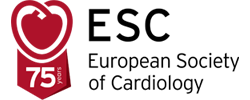Conference report : International Cardiovascular Development, Anatomy, and Regeneration (ICDAR) Community Meeting, Prague 2024
Authors: David Sedmera, Antonio Baldini, Maurice van den Hoff, and Bill Chaudhry
Full report submitted to: Journal of Cardiovascular Development and Disease
The International Cardiovascular Anatomy, Development, and Regeneration meeting took place jon 18-20 September 2024, in Prague, Czech Republic. It was endorsed and supported by the European Society of Cardiology’s Working Group on Development, Anatomy, and Pathology. Hosted at the Institute of Anatomy, First Faculty of Medicine, the event opened with a hands-on workshop on normal and malformed human hearts. The session allowed participants to study and image both normal and malformed hearts.
The meeting’s content was based on submitted abstracts, which were anonymously evaluated by the Scientific Committee. A wide range of methodologies were represented, spanning molecular and cellular biological techniques with cells and tissues (including organoids) to studies involving whole organs and clinical applications. Numerous researchers presented single-cell sequencing data and spatial transcriptomics, providing a wealth of novel data that stimulated interesting discussions.
The main conference included nine platform sessions that covered topics such as paediatric cardiology, cardiac progenitor biology, mechanisms of congenital heart disease, and cardiac regeneration. Additional highlights featured two keynote lectures focusing on cardiac genetics and development.
Below we provide a short synopsis of the sessions, a more detailed report will be available soon.
Paediatric Cardiology and Congenital Heart Disease (CHD) Origins
The session discussed novel insights into prenatal screening for detecting heart defects, and current treatment approaches for transposition of the great arteries. Others explored the interplay between genetic and environmental factors influencing CHD development. New suggestions to reduce CHD occurrence were based on transcriptomic and epigenomic changes in a model of iron deficiency combined with Notch1 mutations.
Cardiac Progenitors I and II
Two sessions on cardiac progenitors covered advancements in early cardiogenesis, cell dynamics, and heart morphogenesis. Topics included live imaging of cell shape changes, the role of Vangl2 in cell rearrangement, ribosomal proteins in hypoplastic left heart syndrome, and TBX1 in gene regulation. Additional studies highlighted the development of coronary arteries, epicardial cells, and cytokinesis, showing unique gene expression profiles and pathways in heart formation.
Cardiac Regeneration
This session presented advancements in cardiac regeneration, with discussions on how specific proteins and cellular factors can induce the renewal of adult cardiomyocytes. Research also explored the roles of lymphatic vessels and macrophages in enhancing regenerative potential in neonatal hearts following injury.
Cardiac Valves
This session covered the of cardiac valve development. Interesting data suggested a mechanosensitive role for Hand2 in matrix remodelling. Other studies highlighted a role for Sox9 in fibroblast formation and valve homeostasis and an essential contribution of primary cilia to aortic valve leaflet formation. Lastly, Nherf2 was presented as a Notch-related gene with potential involvement in valve development.
Mechanisms of CHD
This topic remains a cornerstone of these European cardiovascular development meetings, and the current platform session underscored its continued relevance. Studies on Tbx1-Vegfr3 interactions revealed that double heterozygous mutations lead to ventricular septal defects and outflow tract anomalies. Longitudinal research on heterotaxy in Nodal mutants showed flexibility in ventricular positioning after cardiac looping. A novel role was presented for β1 integrin in cardiomyocyte organization during ventricular wall development. Finally, an intriguing mouse model featuring a bifid heart apex, suggested that ventricular septum formation relies on infolding and convergence of the right and left ventricular walls through a retinoic acid-dependent fusion mechanism.
Epigenetics
The epigenetics session explored epigenetics from multiple perspectives. First, cell-type-specific signatures of cardiac cis-regulatory elements were identified during development, demonstrating key functional roles of cardiac enhancers of conserved transcription factors in cardiac morphogenesis and a relation to CHD. Second, CHD7 targets involved in early cardiac commitment and differentiation stages were discovered using genome-wide profiling and transcriptomics on CHD7 conditional mutants. Compelling data were show for epicardial-myocardial cell interactions that influence cardiomyocyte polarity and ventricular structure, through specific candidate genes such as jam2b. Finally, research on neural crest cell migration in mouse models revealed how maternal valproic acid exposure disrupts heart development.
Cardiac Conduction and Arrhythmias
This session focused on the developmental origins of arrhythmias and potential therapeutic insights. Research highlighted how reduced Pitx2 expression in the left atrium increases Wnt signaling, promoting atrial remodeling and arrhythmia risk. A zebrafish model demonstrated how overexpression of a sodium channel induced arrhythmia and fibrosis, mirroring human phenotypes of atrial fibrillation. Additionally, the importance of Tmem161b in maintaining cardiac rhythm and regulating calcium handling was identified, offering new perspectives on arrhythmia mechanisms.
Myocardial Structure and Function
The final session focused on cardiomyopathies, with presentations on novel pathways in cardiac hypertrophy, including the CRTC and Sarcalumenin/Thinman. Research also showed that deleting Slc5a6 in cardiomyocytes causes cardiomyopathy and ECG abnormalities in mice. Additionally, the role of PRDM16 in hypertrophic cardiomyopathy and left ventricular non-compaction was explored using CRISPR-based mouse models, advancing understanding of their pathogenesis and potential treatment strategies.

Conclusions and Perspectives
In keeping with a longstanding tradition, the conference remains a highly attended event, reflecting strong engagement in the latest cardiovascular research. Despite the disruptions caused by the COVID pandemic, it is clear that the European cardiovascular development and regeneration community is vibrant and thriving. The meeting’s quality is internationally recognised, drawing participants from across the globe.
The next ICDAR meeting is scheduled for 15-17 October 2025, in Granada, Spain, and will be organised by Dr. Diego Franco (Jaen, Spain).

 Our mission: To reduce the burden of cardiovascular disease.
Our mission: To reduce the burden of cardiovascular disease.